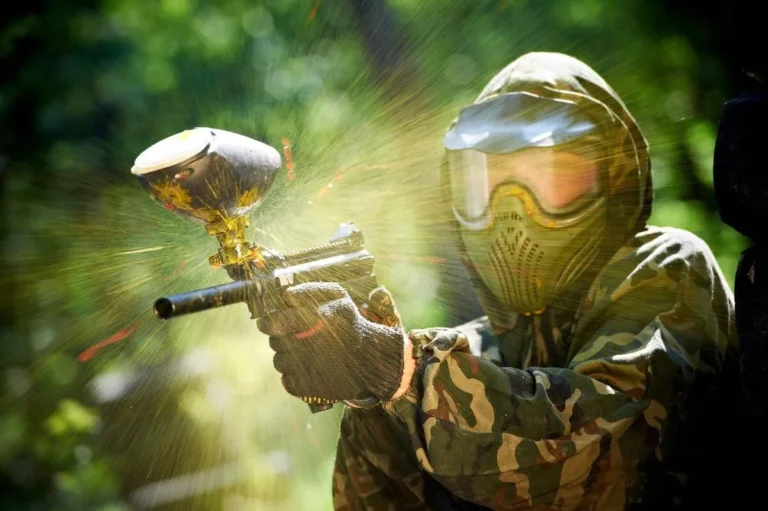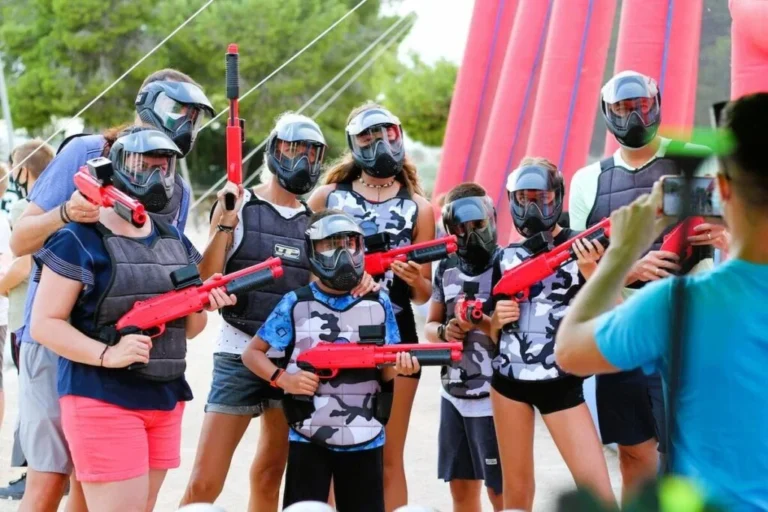MASTERING PAINTBALL: TACTICS FOR THE ELITE PLAYER
What turns a couch hero into a paintball machine? Tactics for one thing. Strategy (stringing together your tactics) is more aligned to what you and your team are doing together. It’s not enough just to point your marker at the enemy and avoid getting murked. In the arena, you need to turn up with some sly moves that surprises and overcomes your enemy.
Pre-Game Preparation: The Foundation of Victory
Mastering paintball means teams understanding that preparation begins well before the first shot is fired.
Here’s what they do:
Gear Check
Double check and triple check your gear. Don’t wait until you’re on the field to see if your marker works… Ensure markers are chronographed to the legal limit (typically around 280 fps for advanced players), and having extra CO2 or HPA tanks.
Field Study
Before stepping onto the field, elite players analyze its layout. This includes understanding natural cover, man-made obstacles, shade zones, and potential sniper spots. Knowledge of the field allows for pre-game planning of routes, ambush points, and defensive positions. Drone footage can be amazing if rules of the game allow it before the game begins, especially for a woodsball game.
Team Strategy Meetings
Mastering paintball means teams getting together to discuss initial tactics. This might involve setting up a basic formation, deciding on initial movement patterns, or designating roles like flankers, snipers, or rushers.

The Art of the Zig-Zag
If you run in a straight line through a hail of paintballs, guess what…you’re going to be hit for the newbie that you are. It’s going to be a huge innovation in your game if you zig-zag. Be aware that zig-zagging in paintball is patented and you have to pay Zig-Zag LLC all your lunch money now and in the future just to do it. But let’s understand one thing: zig-zagging isn’t dodging. It’s about making you, as a moving target, harder to hit, and gives you a better angle for landing a shot.
Flanking Manouvres
I have a friend Scotty who is a silent assassin on the flanks of the arena. He glides like a ghost even in open spaces, but no one actually seems to see him. Beware the Scotty. He has you in his sight if you don’t scan continuously. He moves on the flanks without his legs moving. Behind the mask there’s no face, but unbelievably fast fingers.
Flanking remains one of the most effective tactics in paintball. This is how it’s done:
1. Distraction and Deception
A few players draw fire in the center, while others move to the sides. This not only splits the enemy’s attention but also creates crossfire opportunities.
Sun Tzu’s “The Art of War” emphasizes deception as a critical strategy, teaching that all warfare is based on deception. Sniper Tzu (not real name) advised that mastering paintball armies meant appearing weak when strong, and strong when weak. This would confuse and mislead the enemy. You then get strategic advantage and achieve victory through rodent cunning rather than brute force.
2. Stealth Movement
Using the terrain to remain unseen, players move around the enemy’s position. This requires excellent map awareness and often involves using less traveled paths or natural cover.

Suppressive Fire
The movie Black Hawk Down has soldiers laying down cover fire in the Battle of Mogadishu so others can advance and retreat. That’s you, but with paintballs. You’re not just shooting; you’re creating a no-go zone for your opponents, forcing them take cover while your team advances. This is known as Area Denial. By laying down continuous fire, teams can control movement on the field. This tactic prevents opponents from advancing or retreating, and keeps them hiding like the mice that they are
The Militia Line
Like trans activists moving down the main road with large banners and blue hair, you advance together in coordination. It’s particularly effective in open fields where cover is minimal. It’s sometimes a line of paintball fury that’s hard to break. If there’s no coordination, or one part of the line is compromised, it’s possible to adjust by retreating, or by the ends of the line pushing forward to outflank the enemy. You might get pinged quickly if the enemy realises what you’re doing. But it’s still worth trying from time to time.
Dead Man Walking
This is hilarious if it works (and kind of shifty). It relies on basic acting. You pretend to be hit and feel your imaginary bruise. You walk off with a hang-dog look, but instead of leaving, you scurry to a new position and setup for a surprise attack from a new position.

Plan B, C, D…
Remember, no plan survives contact with the enemy. Flexibility is your best friend. If your initial strategy gets disrupted, switch gears. Maybe it’s time for a full-on assault, or perhaps a tactical retreat to regroup. Adapt or get splattered. Use pre-determined code words or hand signals to direct your team to regather.
The Power of Intel
Do your recon. Before you even step onto the field, know where everything is. Scouting will reveal the crucial field positions that can be held or have vulnerabilities. When you see how the field is laid, a player or players can be designated snipers that can control key areas. Their role is to eliminate threats from a distance, often from elevated or hidden positions.
Post-Game Analysis
Top teams don’t just play; they learn. They debrief after each game and discuss what worked, and what didn’t, and why. Mastering paintball is a process of continual learning. It doesn’t have to a bitch session where everyone vents about some injustice. That’s for other teams. Keep your debrief factual and a time for reflection.
It’s super interesting to see a video review of games. There’s always things you see on video that you never had a chance to observe in the game, expecially enemy tactics. It’s great for the team to be able to kick back in front of a big screen and be entertained by what worked and what didn’t.







